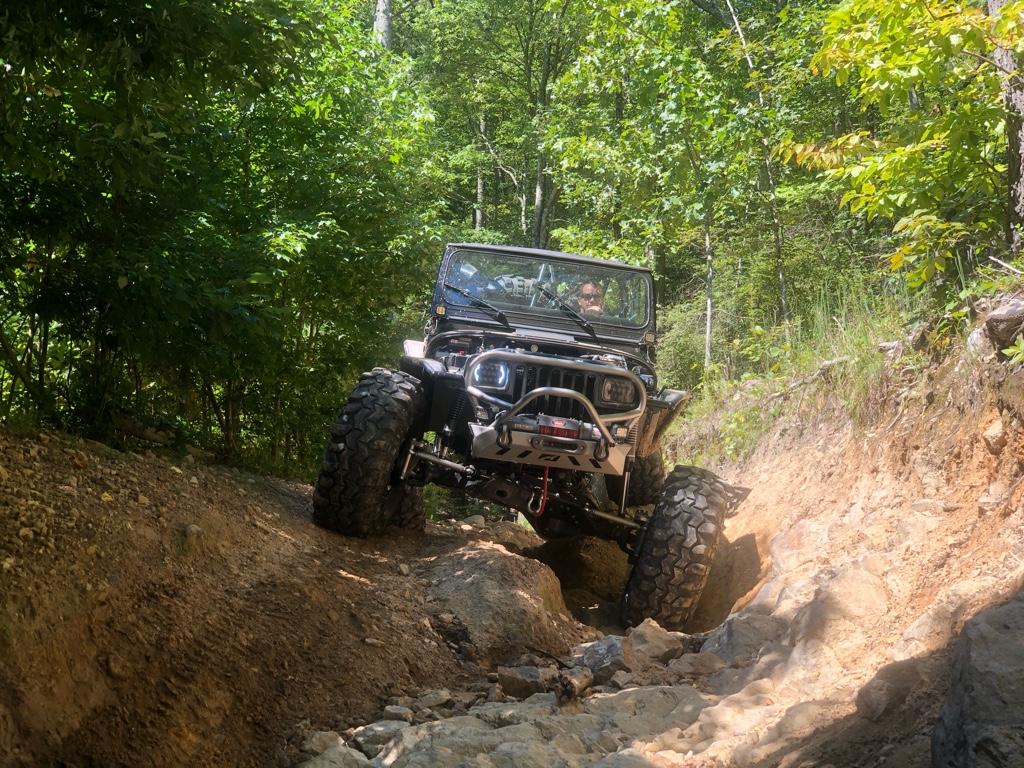ok so I have been working on a rear 4 li k on my full body 1988 trooper. This Will be an east coast rock crawler type rig. I originally thought I would have 7 up and 9 down. Now with suspension mocked up and tires kind of there. The amount of body I would need to cut I’m leaning more towards 5 up and 11 or 12 down. Curious what issues I might have since this is my first link suspension.
Just decreased ride quality. Tough to get it to ride pretty good with that little uptravel. It’ll fine at speed on the road, and not noticeable at crawl speed in the rocks.
It’ll be noticeable trail to trail, just rougher ride. With little uptravel it can be difficult to get enough compression dampening to keep it off the bumps on big events while soft enough to keep a decent ride on smaller stuff.
More uptravel is always better.
Can also think about alternative ideas to the norm.
Timbren rubber accordion style bumps,
larger diameter 2.5” air bumps with 1.0” - 1.5” travel and some creative valving in the bump, low n2 psi, high oil volume
I’m not saying it can’t be done with that uptravel and get good results, it’s just far easier to achieve with more uptravel.
With more uptravel, You just have more “time” (travel) ( piston and valving working the oil) to absorb the energy before the suspension starts affecting the chassis.
If you have a suspension package that’s adjustable, mount your shocks at full bump with the tire at full stuff, then set your ride height. From there see how it does, and adjust ride height.
You may discover that 1” taller ride height and 6” uptravel is X amount better than 5” uptravel.
Also for anyone following along. Make sure you set your spring preload (spring rate) and ride height on coilovers with driver and passenger in vehicle.
I had a terrible time doing my rear by myself, as I was setting for 7/7. But every time I rode around to tune, it felt harsh. So I kept increasing ride height to make sure I had my 2” preload.
When I got the springs close and valving close, as my jeep sit static without driver/pass it sits at 8.5-9” uptravel.
When me (215 lbs) and my wife are in the jeep it drops down to 7” uptravel and the correct ride height.
I know it sounds remedial and easy to avoid, but just another thing to consider when putting a rig together mostly by yourself. Account for driver/pass/fuel/tools/spares etc.
when you are getting springs/preload/valving close to optimal, you will notice changes in weight seem to make bigger changes to suspension position.
Same applies to setting oil volume and n2 psi for setting ride height with air shocks... even if they are the churched up ORI ones. Haha







